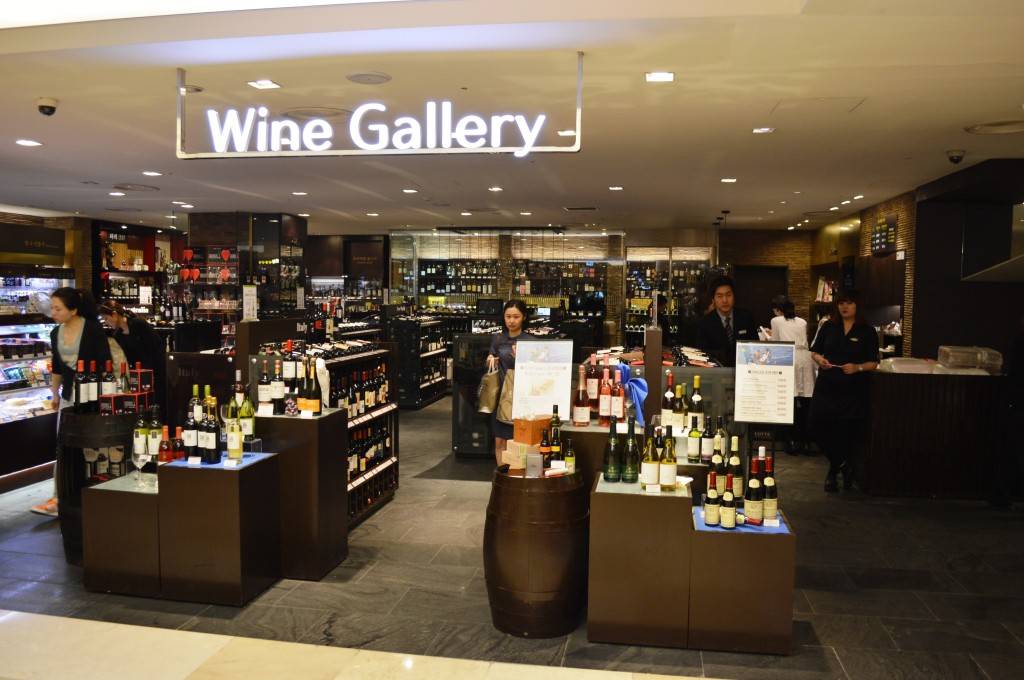
When I began this blog my intention was to share as many exciting wine experiences as possible with a focus on value. Few things are more exciting to me than finding an extraordinary wine with a merely ordinary price. With that being said: When I encountered the complete opposite end of the value spectrum while shopping for wine in Korea, I felt compelled to share that experience as well.
On my recent trip to Seoul, the bustling and energetic Capital of South Korea with a population of over 10 million, I was shocked at the limited availability of wine and the prices commanded by what was available. It seemed that finding a wine shop or even a store that carried wine was a challenge in itself. My unfortunate conclusion: I couldn’t afford to drink Napa Cabernet, Spanish Tempranillo, Italian Nebbiolo, Australian Shiraz, Bordeaux from the left or right banks, and especially not any Burgundy.
To illustrate I took some photos in a wine store located within the local mall. I will share what I was able to capture. I wanted to photograph what was in the temperature controlled “cellar” section of the store but when I asked politely if I might take photos I was told rather abruptly that I could not. To give you an idea of what was available and the corresponding prices, here is what I was able to capture:
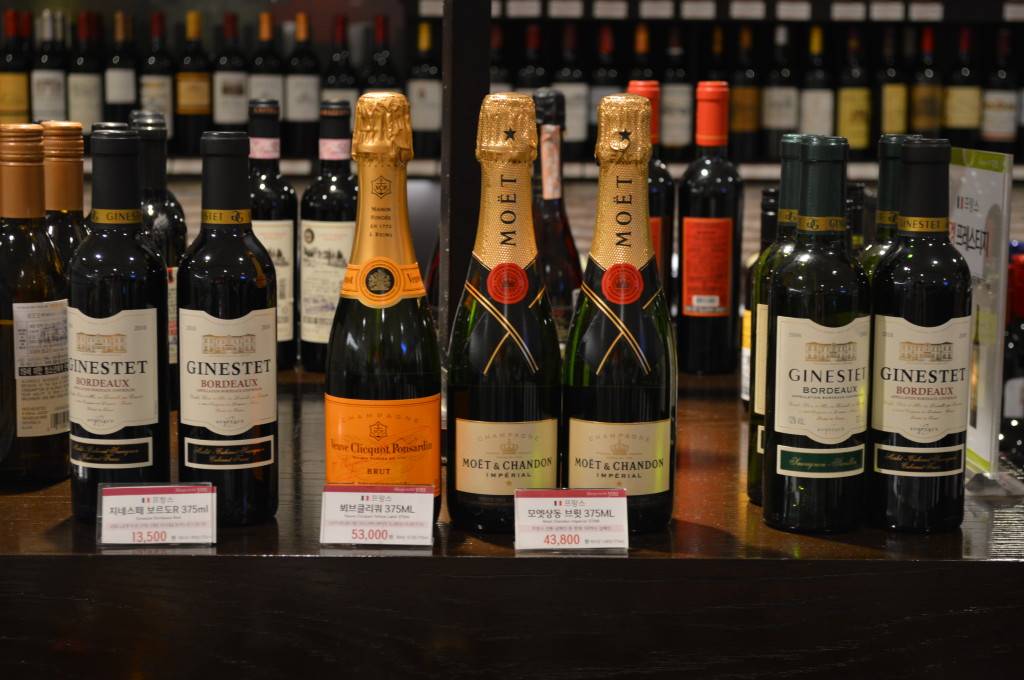
The 375ml Veuve Clicquot price: 53,000 Won ($46.40). Average Wine-Searcher Price: $23
The 375ml Moët & Chandon price: 43,800 Won ($38.34). Average WS Price: $20
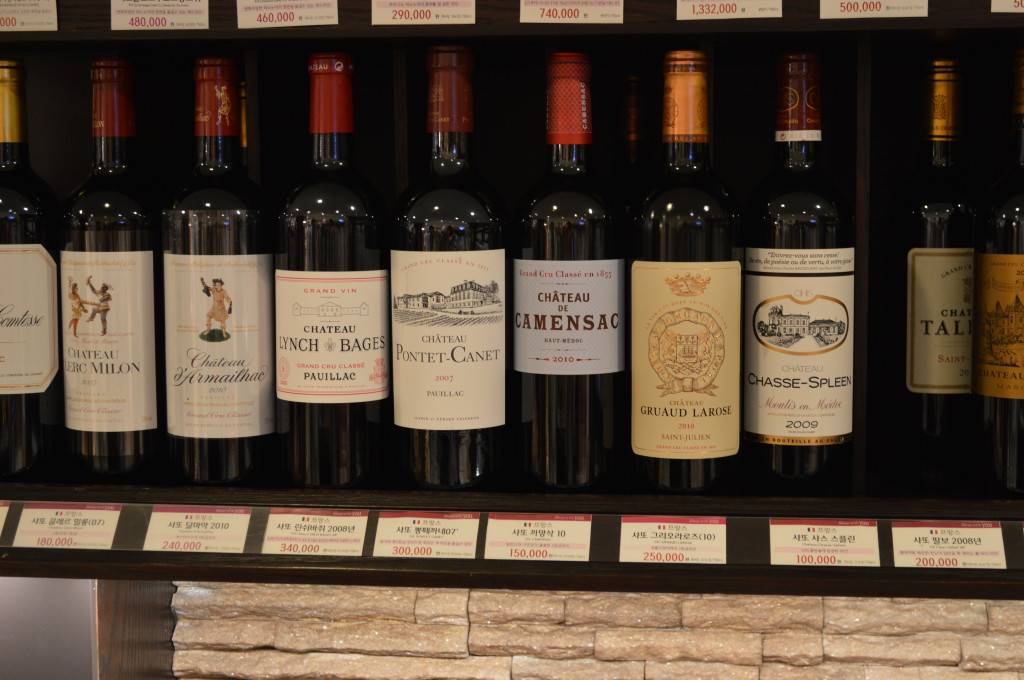
Chateau Lynch Bages 2008 price: 340,000 Won ($297.63). Average WS Price: $119
Chateau Pontet-Canet 2007 price: 300,000 Won ($262.62). Average WS Price: $90
Chateau Camensac 2010 price: 150,000 Won ($131.31). Average WS Price: $30
Chateau Talbot 2008 price: 200,000 Won ($175.08). Average WS Price: $62
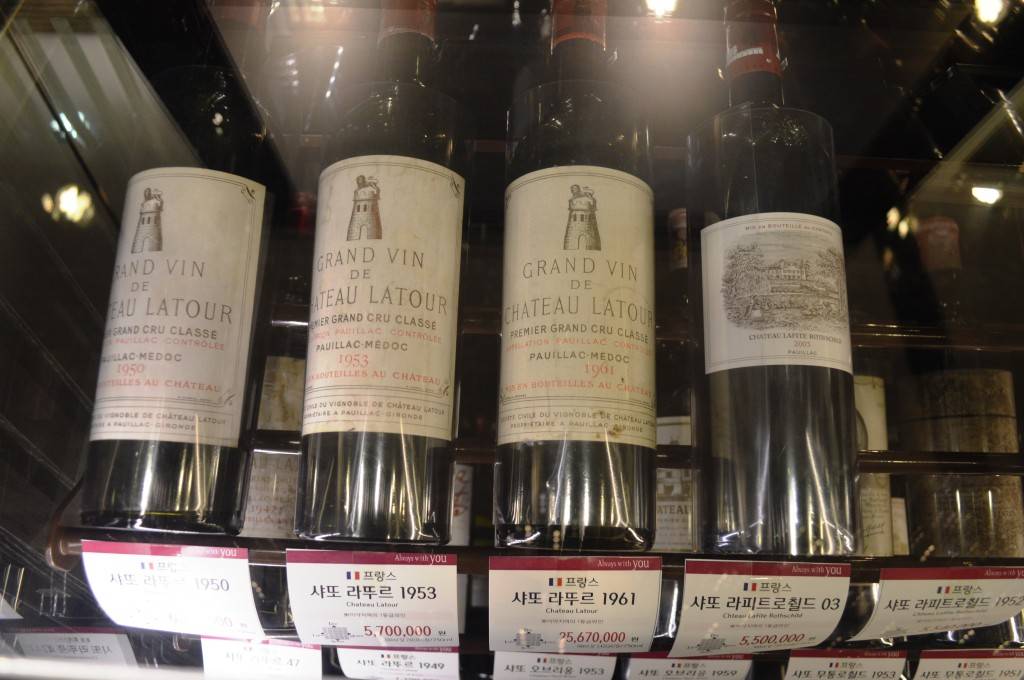
There was a glass display case outside of the cellar which I was able to take some photos of. Inside were high priced, blue-chip collectibles including everything from top shelf Burgundies to a vast mouth watering selection of First Growth Bordeaux with some serious bottle age. Since I couldn’t afford to drink these beauties at home in the US they were no more within reach at this wine shop in Seoul. A few price comparisons:
Chateau Latour 1961 price: 25,670,000 Won ($22,829.95). Average WS Price: $5,788.00
Chateau Lafite Rothschild 2003 price: 5,500,000 Won ($4,891.50) Average WS Price: $1,403
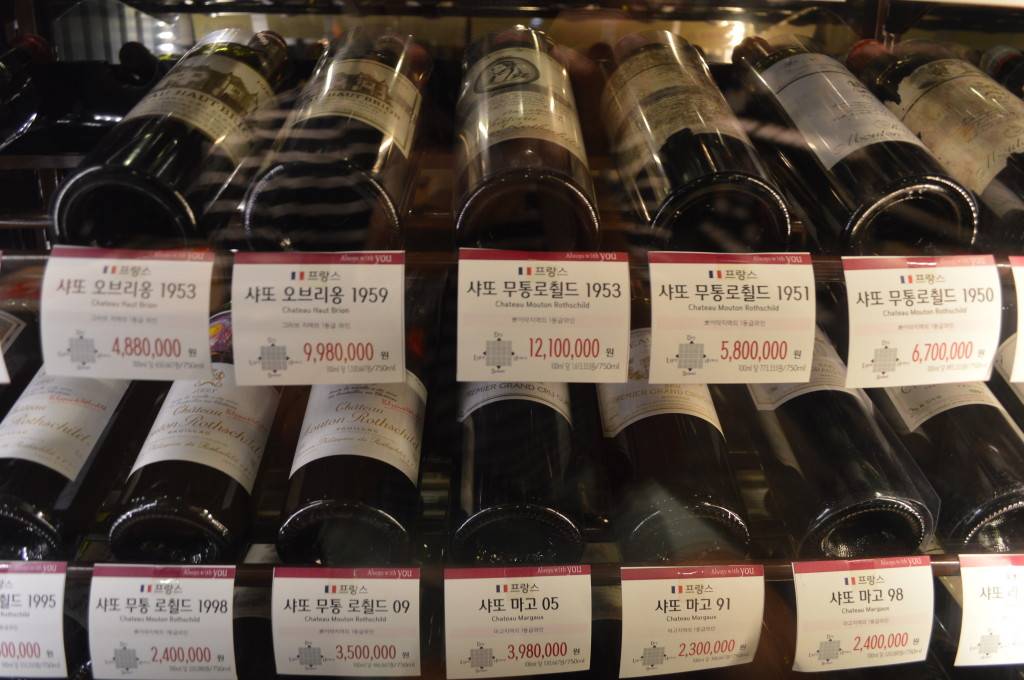
Chateau Haut Brion 1959 price: 9,980,000 Won ($8,875.84). Average WS Price: $2,994.00
Chateau Margaux 2005 price: 3,980,000 Won ($3,539.67). Average WS Price: $1,191.00
Chateau Mouton Rothschild 2009 price: 3,500,000 Won ($3,112.77) Average WS Price: $1,104.00
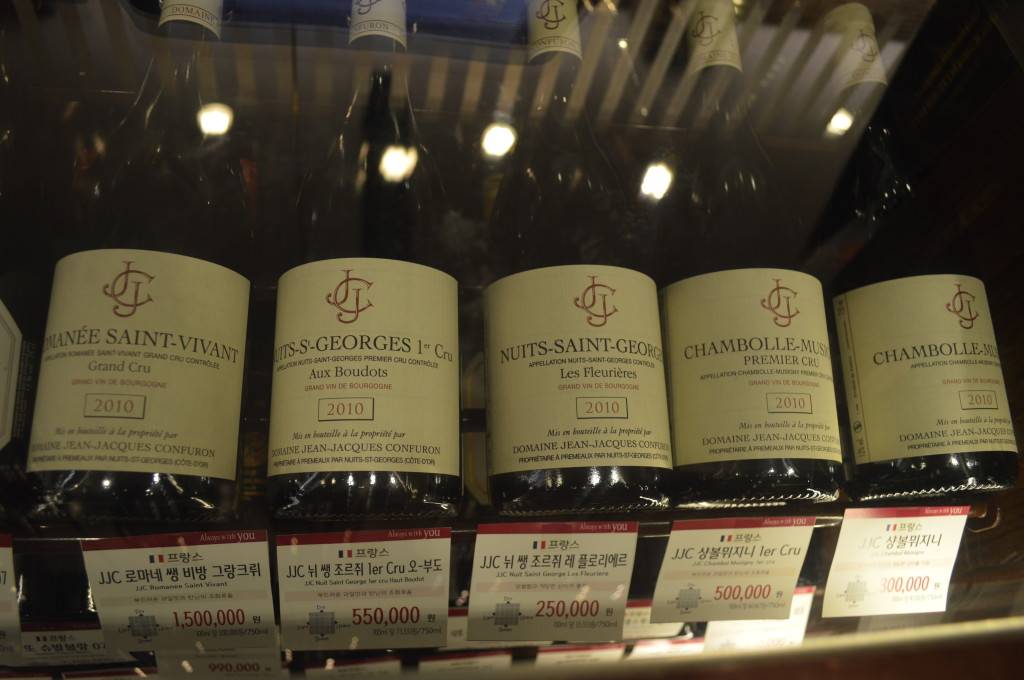
Domaine Jean-Jacques Confuron Romanee-Saint-Vivant 2010 price: 1,500,000 Won ($1,334) Average WS Price: $341
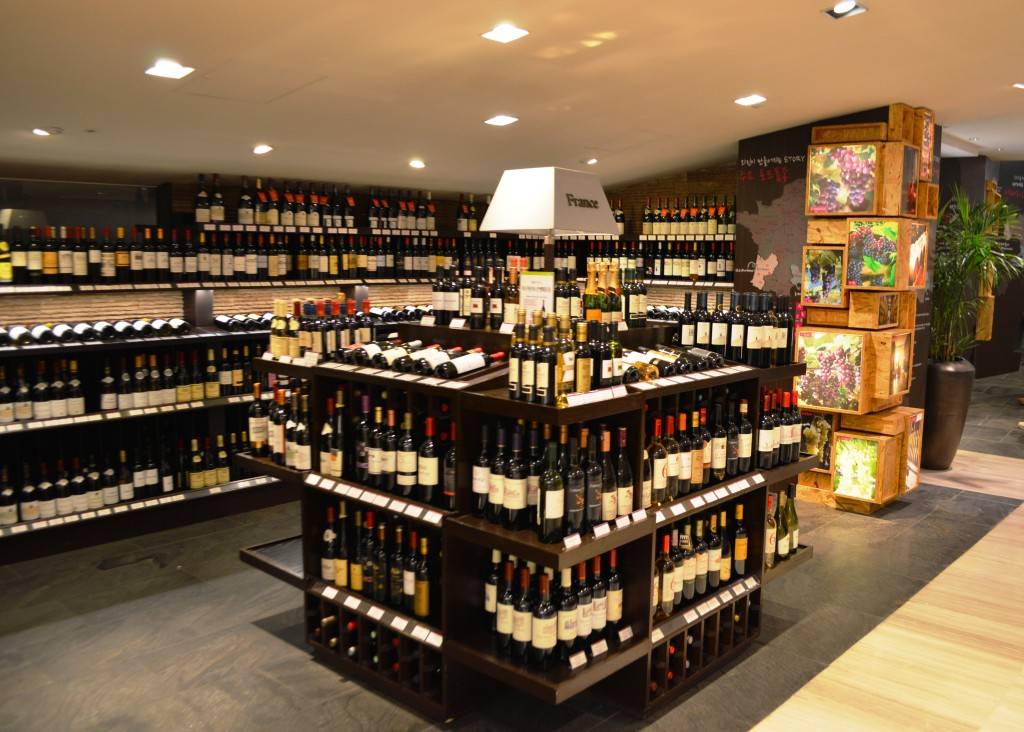
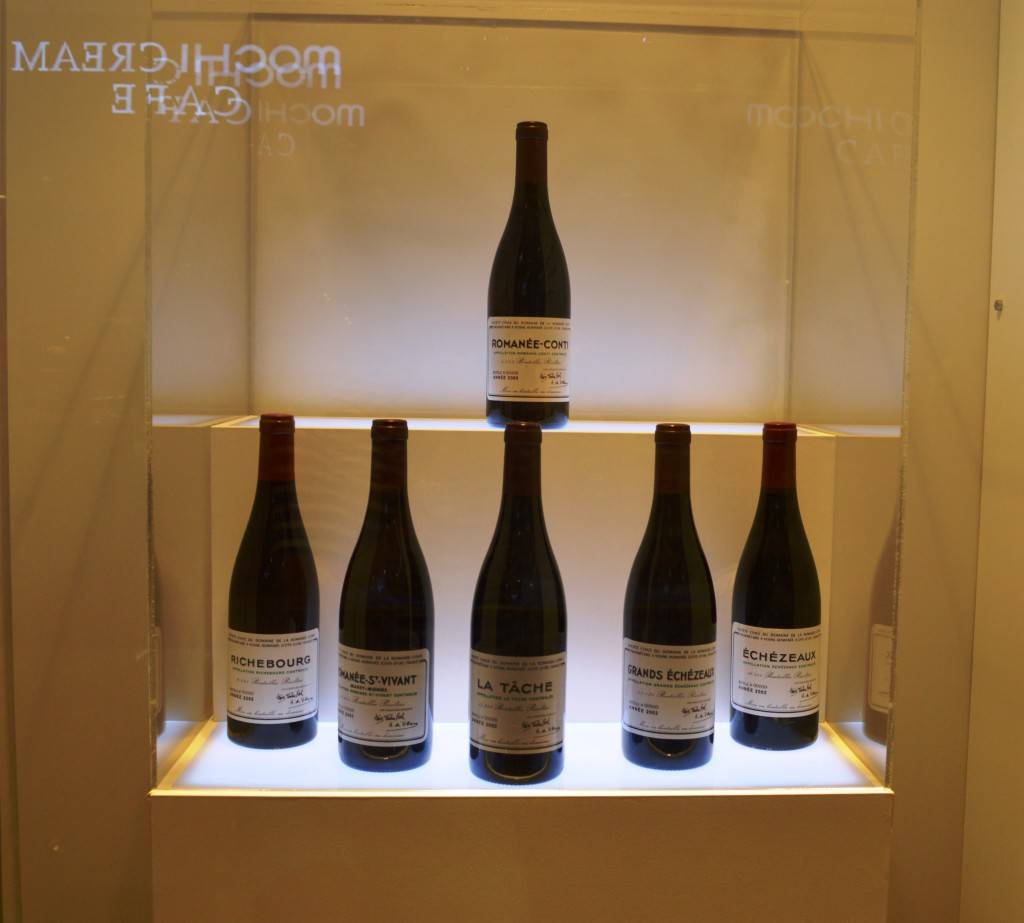
A display of the vaunted Domaine de la Romanée-Conti which must be so expensive that no prices are being displayed.
While I didn’t make any wine purchases at this wine shop, I did inadvertently happen upon one in another mall a few days later. I wasn’t allowed to take any photos in their store, but I did make a purchase! This shop’s prices were only marginally lower but unlike the first wine shop, this store had a clearance section!
There was a selection of wine gift packs being discounted and amongst them was something from Baron Phillippe de Rothschild (of Mouton Rothschild) himself, only somewhat more pedestrian and affordable: The Cadet d’Oc 2011 Cabernet Sauvingon and Syrah. I was able to pick up this two pack of quaff-able easy drinking reds which proved to be quite enjoyable and well worth the price paid of 24,000 Won, including a corkscrew and foil cutter. That works out to about only $21.34 for both bottles and the wine accessories: I had succeeded in finding a wine deal while shopping for Wine in Korea.
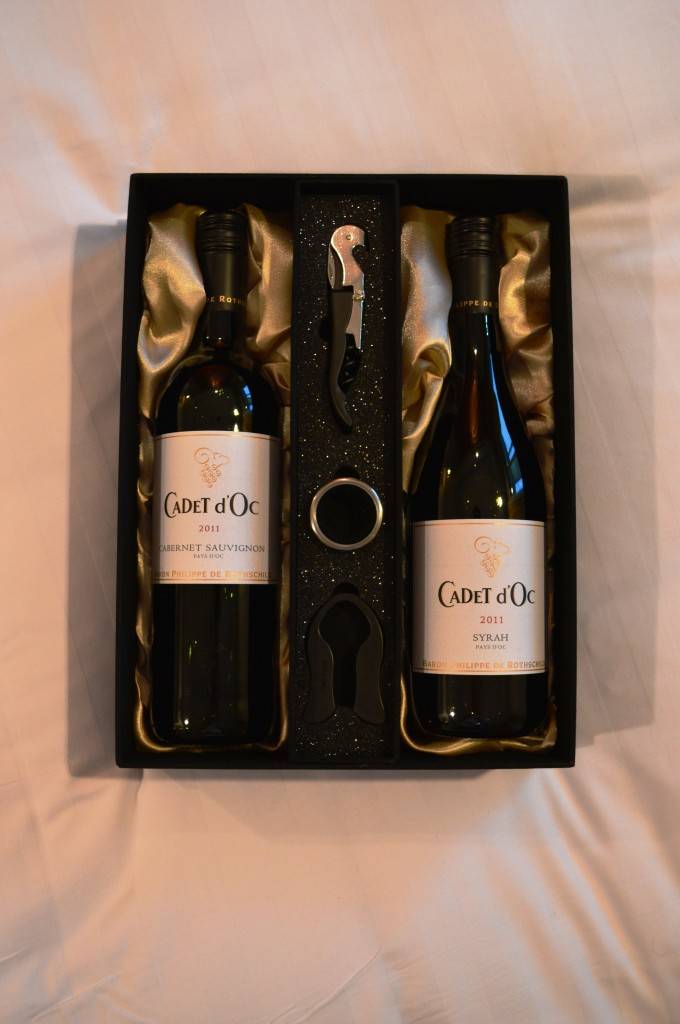
Fortunately this was not the only wine in Korea I was able to enjoy. If you look past imported wines, there are truly exceptional local wines available everywhere at very reasonable prices. While prices and brands vary widely, there were various types I tried and enjoyed:
Makgeolli: Made from a mixture of wheat and rice, this traditional beverage once enjoyed mostly by farmers has become very popular and mainstream in Korean culture. Don’t let it’s milky off-white appearance turn you off, as it is light, slightly effervescent and absolutely delicious.
Korean Rice Wine: Unlike traditional American and European wines which are made from the fermentation of naturally sweet grapes, Korean Rice Wine is made from the amylolytic fermentation process of rice starch into sugars. Rice wine typically has a higher alcohol content ranging from 18-25% ABV rather than about 9-16% in that of traditional wines. Rice wine varies in style from those that taste somewhat similar to a Vodka to those which are lighter and infused with herbs and ginseng like the popular Baekseju.
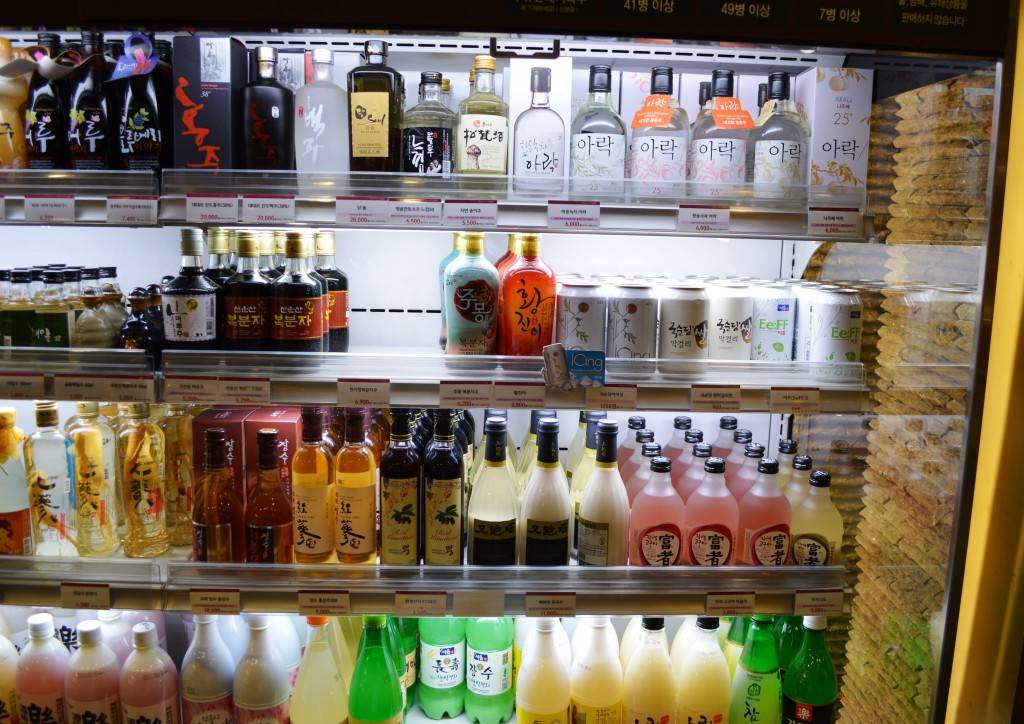
This example of a selection of local wine in Korea features Makgeolli on the lower section and Soju or Korean Rice Wine in the upper sections.
Imported wine consumption and enjoying wine in general is certainly a luxury here in South Korea. While selection for top international wines with strong brands is good once you are able to find a wine shop, the prices are not so good.
Being here and seeing the different prices and availability certainly lends a certain perspective I hadn’t had before. In doing a bit of research into why the prices were so high I discovered that any wine that is imported faces a steep tariff which local wines aren’t subjected to. Import taxes have a similar affect closer to home in Canada, although not quite to the extent as they do in South Korea. So next time you find yourself debating whether to splurge on your favorite bottle, remember that we are very fortunate to have the selection and prices which we have in the US. That same bottle might cost you three times as much in South Korea, if you can find it.
You might also like:
Wine Country – Details of our journey to Sonoma and Napa including Round Pond Estate, Ladera Vineyards, and Beringer Vineyards including a great Garden to Table Brunch at Round Pond Estate.
Espelt Garnacha Old Vines Emporda 2010 -This Spanish gem is well worth your $10!
Costco Kirkland Signature Malbec Mendoza 2011 – Is this Malbec from Costco’s impressive Kirkland line good enough to be your new go-to bargain Malbec?
Pine Ridge Encantado Red Blend Napa Valley 2010 Review – This isn’t the second wine from this prestigious Napa Valley winery but the same juice at under $20!
*Average prices are based on Wine-Searcher results and conversion rates are based on currency exchange rates between July 5, 2013 and July 14, 2013.

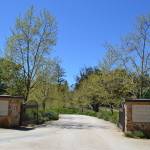
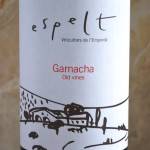
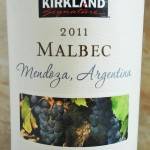
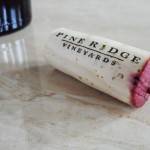
This is an excellent point that highlights the follies of the wine industry in Korea.
I’ve spent time in the USA and I know it’s possible to find a good-value wine for $20. It’s almost impossible to find the same value for price in Korea. Most wines in Korea are marked up by at least 2-3x the average selling price in the US/Europe.
That explains why moscato is so popular in Korea. Moscato is a sweet wine that targets the low-end market. The bottle of moscato that’s sold for 15,000-20,000 KRW (7-10 euros) in Korea is actually a cheap (and often vile) product that occupies the lowest end of the sparkling wine market in Europe.
The Korean wine industry thrives off importing the cheapest brands in Europe and marketing them as a mid-end product. In the end, Korean customers lose out big-time.
Like you say, Korea is at the low end of the value spectrum and retailers try to profit off the low-discerning tastes of customers. This is not a sustainable strategy.
Pingback: Tin Roof Cellars Merlot - The Fermented Fruit
Pingback: Wine Country - The Fermented Fruit
Pingback: Meerlust Estate: Rubicon 2007 Review - The Fermented Fruit